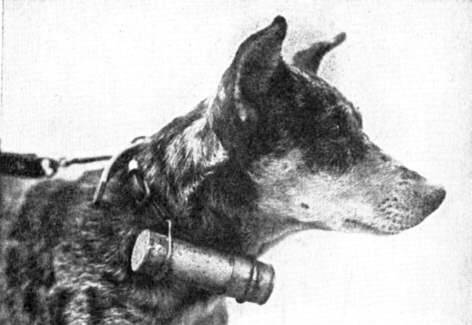
War is often regarded as the greatest downfall of humankind. Indeed, no other species commits such wanton destruction on such a grandiose scale and with such horrifying efficiency. It’s tragic too then, that as humanity has domesticated wildlife, we have incorporated them into our fights and conflicts.
During the First World War, along with a million strong army, there was another much less well known army of 16 million animals. This Remembrance Day we look back and remember all the animals that tragically fought, and died, in our name.
Dogs
Man’s best friend has followed us into war for centuries, and still see active service today. Just as they found versatile uses in civilian life, dogs have many roles in warfare, from scouts and trackers, to bomb detection and intimidation.
During the First World War it’s thought that more than a million dogs died on both sides. Tragically, the war had consequences far from the front too. As bombing and rationing hit, in the UK pet owners were urged to have their pets destroyed to save them from suffering.
Messenger Pigeons
Long before advances in communications and satellite technology, pigeons were a crucial component of an army. Throughout the world wars they were used in prodigious numbers to deliver life saving messages, under treacherous conditions.
Their job was dangerous. Soldiers would often try to shoot down enemy pigeons, and many never made it through. Others became quite famous, such as a female carrier pigeon called Cher Ami whom is credited with saving the lives of nearly 200 American service men trapped behind enemy lines.
Amazingly, to combat messenger pigeons, the Germans even began bringing hawks to the front lines.
Horses
After dogs, horses are probably one of the most widely domesticated animals. They are notable simply for the staggering numbers—8 million in World War One—in which they have served and died in human conflict, being present in at almost every famous land engagement up until the 20th century.
Of the one million horses sent to fight in World War One by the British, serving not just as cavalry, but as transport for supplies and ammunition, only 62,000 came home.
Mules and Donkeys
Suffering a similar but much less well-known fate to horses, it is very difficult to estimate quite how many mules and donkeys have died in conflict. Though the toll is almost certainly as high, if not higher than horses.
One common use of mules and donkeys was a stretcher-bearers, carrying wounded servicemen back from the front. It’s said that one Donkey named Jimmy was even made a sergeant.
Camels
Where horses struggled, camels were brought into service. They excelled in the arid and waterless deserts and are still used by forces today.
In North Africa, it was said that a camel could carry six weeks’ worth of supplies without water, and that they were calmer under fire. No accurate records exist of how many died in service.
Canaries
In the same way that these friendly little birds were used as an early warning system for miners (think ‘canary in a coal mine’), they were also pressed into service to detect gas and chemical attacks.
Their fast repertory rate means that they succumbed much more quickly, giving soldiers a crucial warning of any incoming attack.
Entomological Warfare
Even insects did not escape their use in war. France for example experimented with using the Colorado potato beetle to damage German crops, and Japan used plague infected fleas to infect the population in China. Canada is said to have had the most advanced entomological research effort among the Allied Powers.







